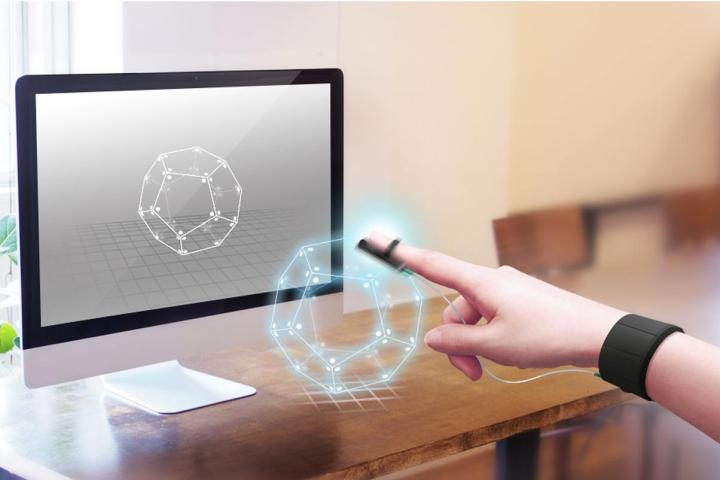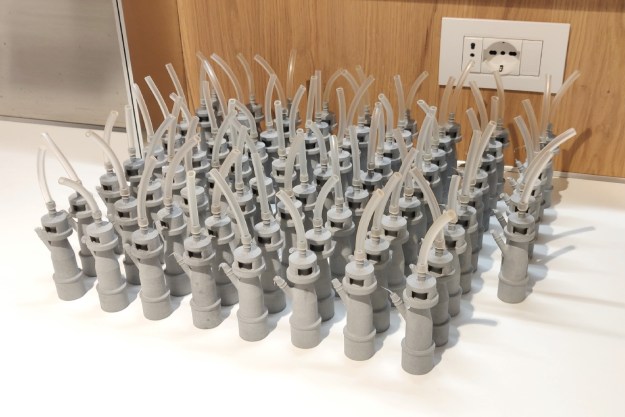
The “3D-Haptics Technology” uses a virtual-reality headset and wrist-mounted box connected to a fingertip-attached molding, coin-shaped molding, stick or pen. This setup allows a user to “feel” virtual objects – the resistance of a button, for example.
Related: ViviTouch turns touch into language with HD Feel

There are a number of possible applications for this touchable 3D technology, ranging from the casual (e.g., enhancing the realistic nature of video games and virtual musical instruments), to the artistic (e.g., replacing a mouse or tablet with natural gestures when creating 3D-printed objects), to the mechanical (e.g., remote controlling robots and feedback-based driving).
Miraisens wants to commercialize the technology via the electronics and services industries. A software development kit (SDK) and a content development kit are being prepared by the company with the hopes of launching a closed beta at the end of the year and an open beta in spring 2015. The company will hold a technical workshop in the U.S. in November.
Editors' Recommendations
- 3DMakerpro’s Seal is a pocket-sized scanner to make next-gen precision 3D prints
- Need a last-minute Halloween costume? Check out these 3D-printable getups
- The future of making stuff: Inside the evolution of 3D printing with Formlabs
- Father’s Day Gift Idea: These cheap 3D printers are on sale for less than $300
- 3D printing lets hospitals make ventilator substitutes with common equipment


